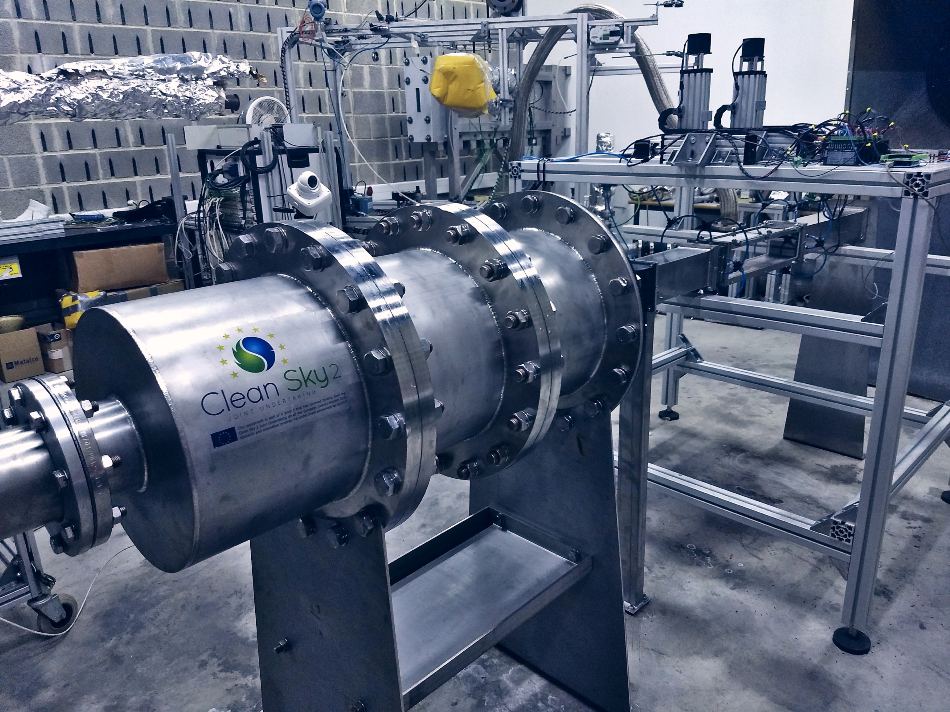May 19 2020
The SACOC project forms part of the Clean Sky 2 program—an aspiring community initiative to realize air transport that is cleaner and more sustainable.

Image Credit: Ruvid
With the emergent need to achieve more sustainable and cleaner air transport, the aeronautical industry has been facing an urge to design turbofan propulsion engines with ultra-high by-pass ratios (UHBRs). Engines of this kind excel in terms of less fuel consumption and producing emissions that pollute less, as well as being less noisy.
But the installation and operation of engines of this kind represent various challenges from several perspectives. The SACOC project has been started to tackle such difficulties. It is an international project under the guidance of Valencia’s Polytechnic University and forms part of the Clean Sky 2 program, a combined initiative of the European aeronautical industry and the Horizon 2020 program.
Clean Sky 2 is the most ambitious community program to achieve cleaner and more sustainable air transport. In accordance with its commitment to tackle European transport challenges, the CMT-Thermal Engines Institute leads this international consortium to evaluate and improve aspects linked to the thermal management of turbofan engines.
Alberto Broatch, Project Coordinator and Researcher, CMT-Thermal Engines Institute
Less Contaminating and More Efficient Aircrafts
The cooling system is one of the difficulties faced by the manufacturers of airbreathing jet engines, or turbofan engines. In a turbofan with UHBR, the fan positioned at the entrance of the engine employs larger blades compared to the normal ones.
But the rotation speed of the gas turbine that triggers it is inconsistent with the fan’s efficient operation. Therefore, the coupling of both turbomachines needs an intermediate gear case, which should be lubricated.
The working temperature of the lubricant is controlled by way of an exchanger that is cooled with air, which is installed in the engine’s secondary flow and uses the air supplied by the fan. The optimal design of this component requires a balance between efficacy, weight and permeability, in order to minimize the impact on the engine’s performance.
Alberto Broatch, Project Coordinator and Researcher, CMT-Thermal Engines Institute.
Wind Tunnel at over 600 km/hour
The focus of the project has specifically been on designing a technique to improve the oil exchangers in next-generation UHBR engines.
To achieve this objective, it is essential to combine both highly-reliable 3D computational simulations as well as experimental measures in a wind tunnel.
Jorge García Tíscar, Researcher, CMT-Thermal Engines Institute
For this purpose, a wind tunnel has been developed at the UPV with the capacity to reach speeds of more than 600 km/hour while precisely reproducing the flow patterns that occur in an actual engine.
In this tunnel, next-generation experimental methods will be employed to characterize the thermal-aerodynamic abilities of the designed prototypes, such as, among other methods, laser-based vibrometry and velocimetry, as well as infrared thermography.
The ultimate aim of such tests is to ensure the lubrication of future turbofan engines, regarded as one of the essential pieces to realize air transport that is more considerate toward the surrounding.
The Polytechnic University of Madrid and Purdue University (USA) have also participated in the initiative, along with French aviation engine manufacturer Safran.
According to Andrés Felgueroso, a CMT-Thermal Engine researcher, “the experimental activities that the UPV takes part in are essential to guarantee the validity of numerical simulations conducted by the UPM and Safran.”
The SACOC project will publish its findings within two years, in 2021.